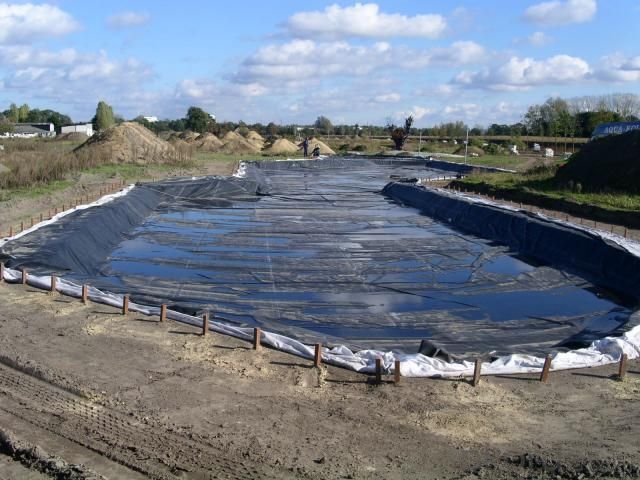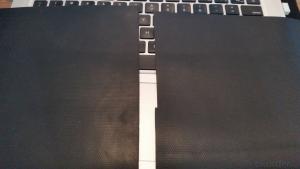EPDM Coiled Rubber Waterproof Membrane with Fleece Back
- Loading Port:
- Shanghai
- Payment Terms:
- TT OR LC
- Min Order Qty:
- 20000 m²
- Supply Capability:
- 5000000 m²/month
OKorder Service Pledge
OKorder Financial Service
You Might Also Like
EPDM Coiled Rubber Waterproof Membrane with Fleece Back
Description Of EPDM Coiled Rubber Waterproof Membrane with Fleece Back:
This waterproof coiled material is of high elasticity with best performance among high polumer
waterproof coiled material in the world.It is also the most typical one in the world.Waterproof coiled material made of ternary ethylene-propylene rubber is produced withthe use of the most advanced contiuous extrusion and vulcanization technology and related equipments which are specially designed for production of such product.It is good in compactness,without bubble and performance difference in length and breadth,perfomances reach or exceedthe demands of GB18173.1-2000 standard.
Main Features of EPDM Coiled Rubber Waterproof Membrane with Fleece Back:
A.Polyester based SBS Modified Bitumen Waterproofing Membrane
a. Strong impermeability
b. High tensile strength, elongation, ability to adapt the grassroots shrinkage deformation and cracking
c. Puncture-resistant, broken resistant, tear-resistant
d. The corrosion resistance, resistance to mildew, weathering good
e. Construction convenient, hot-melt can be operated Four Seasons Construction, reliable joints
B. Fiberglass based SBS Modified Bitumen Waterproofing Membrane
a. High tensile strength, stability of a good size
b. High Temperature good performance
c. Damage resistance, corrosion resistance, resistance to mildew, weathering good performance
d. Good construction performance, reliable joints.
Specifications of EPDM Coiled Rubber Waterproof Membrane with Fleece Back:
| Material | EPDM Rubber |
| Size | 1.2m (width)*20m (length) or customized, weldable type 2.05m or 4m width |
| Thick | 1.2mm, 1.5mm, 2.0mm |
| Type | Vulcanized & Weldable |
| Pattern | Non-reinforced (homogeneous) |
| Certificate | ISO9001/14001 |
Applications of EPDM Coiled Rubber Waterproof Membrane with Fleece Back:
1. Roofs, Basement, Toilet
2. Industrial and civil building waterproofing
3. Geo-synthetic liner for swimming pool, channels, irrigation system
4. Especially suit for projects with high requirements in durability, anti-corrosion and deformation



IMages of EPDM Coiled Rubber Waterproof Membrane with Fleece Back:




FAQ of EPDM Coiled Rubber Waterproof Membrane with Fleece Back:
1. What are we supplying?
We are specialized in producing Colorful Asphalt Roof Shingle, SBS/APP modified bitumen waterproof membrane, Self adhesive bitumen waterproof membrane, PVC waterproofing membrane, EPDM rubber roofing membrane, Single Component Polyurethane Waterproof Coating, and Spray Polyurea Waterproof Coating
.
2. How Many years experience do we have?
We have been exported to more than 20 countries in the past 15 years.
3. How long do we usually reply your request?
We always reply our customer within 24 hours.
- Q:Can a waterproofing membrane be used for shopping malls or commercial buildings?
- Indeed, shopping malls or commercial buildings can utilize a waterproofing membrane. In construction, waterproofing membranes serve as a prevalent method to safeguard structures from water-related harm. These membranes possess tailored designs that facilitate the creation of barriers against water infiltration, effectively preventing leaks and the accumulation of moisture. Through the application of a waterproofing membrane to the exterior of a building, the longevity and durability of the structure are safeguarded. Given the considerable surface areas of shopping malls and commercial buildings, which are often exposed to varying weather conditions, they become particularly susceptible to water damage. Consequently, employing a waterproofing membrane emerges as a highly efficient solution to shield these buildings and uphold their structural integrity.
- Q:Can a waterproofing membrane be used on vinyl surfaces?
- Yes, a waterproofing membrane can be used on vinyl surfaces. The membrane serves as a protective layer that prevents water from penetrating and damaging the vinyl material.
- Q:Are waterproofing membranes resistant to soil chemicals?
- Yes, waterproofing membranes are generally resistant to soil chemicals. These membranes are designed to withstand various environmental conditions, including exposure to soil chemicals, without compromising their effectiveness or integrity.
- Q:Can a waterproofing membrane be used on steel surfaces?
- Indeed, steel surfaces can benefit from the application of a waterproofing membrane. These membranes are specifically designed to establish a shield against moisture and water incursion, and they possess the versatility to be utilized on a range of surfaces, including steel. Construction endeavors, including roofs, balconies, and foundations, frequently feature steel surfaces. By employing a waterproofing membrane on these steel surfaces, one can effectively thwart corrosion and harm arising from water contact. It is crucial to carefully choose a waterproofing membrane that suits steel surfaces, while also adhering to correct surface preparation and application techniques to attain maximum performance and longevity.
- Q:Can a waterproofing membrane be used on roofs with rooftop gardens?
- Yes, a waterproofing membrane can be used on roofs with rooftop gardens. In fact, it is highly recommended to use a waterproofing membrane to protect the underlying structure from water damage. A rooftop garden adds additional weight and moisture to the roof, so a proper waterproofing system is essential to prevent leaks and ensure the longevity of the roof. The waterproofing membrane acts as a barrier against water infiltration and helps to keep the rooftop garden and the building below dry.
- Q:Are waterproofing membranes effective against mold and mildew?
- Yes, waterproofing membranes are effective against mold and mildew. These membranes create a barrier that prevents water from seeping into the structure, thus reducing moisture levels which are essential for mold and mildew growth. By keeping the area dry, waterproofing membranes help to prevent the formation and spread of mold and mildew.
- Q:Can a waterproofing membrane be used on chrome surfaces?
- A waterproofing membrane can be used on chrome surfaces, but it may not be necessary or recommended. Chrome surfaces are typically already resistant to water and moisture due to their inherent properties and protective coatings. These coatings provide a barrier against corrosion and prevent water damage. Applying an additional waterproofing membrane on top of a chrome surface may not provide any added benefits and could potentially interfere with the appearance and functionality of the chrome. It is always best to consult the manufacturer or a professional in the field to determine the appropriate treatment for chrome surfaces.
- Q:Can waterproofing membranes be used on concrete pipes?
- Concrete pipes can indeed utilize waterproofing membranes. These membranes are frequently employed to thwart the ingress of water and safeguard concrete structures against moisture-induced harm. Like any other concrete structure, concrete pipes are vulnerable to water infiltration, which can result in decay and a shortened lifespan. By applying a waterproofing membrane to concrete pipes, a barrier against water can be established, thus averting potential complications such as leaks, cracks, and corrosion. Typically, the membrane is administered to the exterior of the pipe, forming a protective layer that thwarts water from permeating the concrete. This measure contributes to prolonging the pipes' lifespan and guaranteeing their long-standing durability.
- Q:Can a waterproofing membrane be applied over existing waterproofing layers?
- Yes, a waterproofing membrane can be applied over existing waterproofing layers. However, it is important to assess the condition of the existing layers to ensure they are sound and can provide a proper substrate for the new membrane. Additionally, proper surface preparation and compatibility between the existing layers and the new membrane should be considered to ensure a successful and long-lasting waterproofing system.
- Q:Can a waterproofing membrane improve energy efficiency?
- Indeed, energy efficiency can be enhanced through the utilization of a waterproofing membrane. By functioning as a barricade against the infiltration of moisture, the waterproofing membrane effectively averts water from permeating the building envelope. Consequently, it maintains the structure's dryness, thus inhibiting the growth of mold and mildew. This is pivotal in the preservation of indoor air quality and the safeguarding of building materials from deterioration. Furthermore, a waterproofing membrane can also offer insulation advantages. Numerous waterproofing membranes are engineered with a substantial thermal resistance, commonly referred to as R-value. This signifies that they can furnish an additional layer of insulation to the edifice, diminishing heat transfer across the walls and roof. By enhancing the thermal performance of the building, a waterproofing membrane facilitates the reduction of the burden placed on heating and cooling systems, ultimately leading to energy savings and improved energy efficiency. Moreover, a waterproofing membrane can contribute to the reduction of air leakage within a building. Air leakage is responsible for a noteworthy amount of energy dissipation, as conditioned air escapes through crevices and fissures in the building envelope. By effectively sealing off these areas, the waterproofing membrane aids in enhancing the airtightness of the building, thereby diminishing energy loss and improving energy efficiency. All in all, a waterproofing membrane assumes a pivotal role in the enhancement of energy efficiency by preventing moisture intrusion, providing supplementary insulation, and diminishing air leakage. Allocating resources towards a top-notch waterproofing system can result in long-term energy savings, improved indoor comfort, and a more sustainable and efficient building.
1. Manufacturer Overview |
|
|---|---|
| Location | |
| Year Established | |
| Annual Output Value | |
| Main Markets | |
| Company Certifications | |
2. Manufacturer Certificates |
|
|---|---|
| a) Certification Name | |
| Range | |
| Reference | |
| Validity Period | |
3. Manufacturer Capability |
|
|---|---|
| a)Trade Capacity | |
| Nearest Port | |
| Export Percentage | |
| No.of Employees in Trade Department | |
| Language Spoken: | |
| b)Factory Information | |
| Factory Size: | |
| No. of Production Lines | |
| Contract Manufacturing | |
| Product Price Range | |
Send your message to us
EPDM Coiled Rubber Waterproof Membrane with Fleece Back
- Loading Port:
- Shanghai
- Payment Terms:
- TT OR LC
- Min Order Qty:
- 20000 m²
- Supply Capability:
- 5000000 m²/month
OKorder Service Pledge
OKorder Financial Service
Similar products
New products
Hot products
Related keywords






























